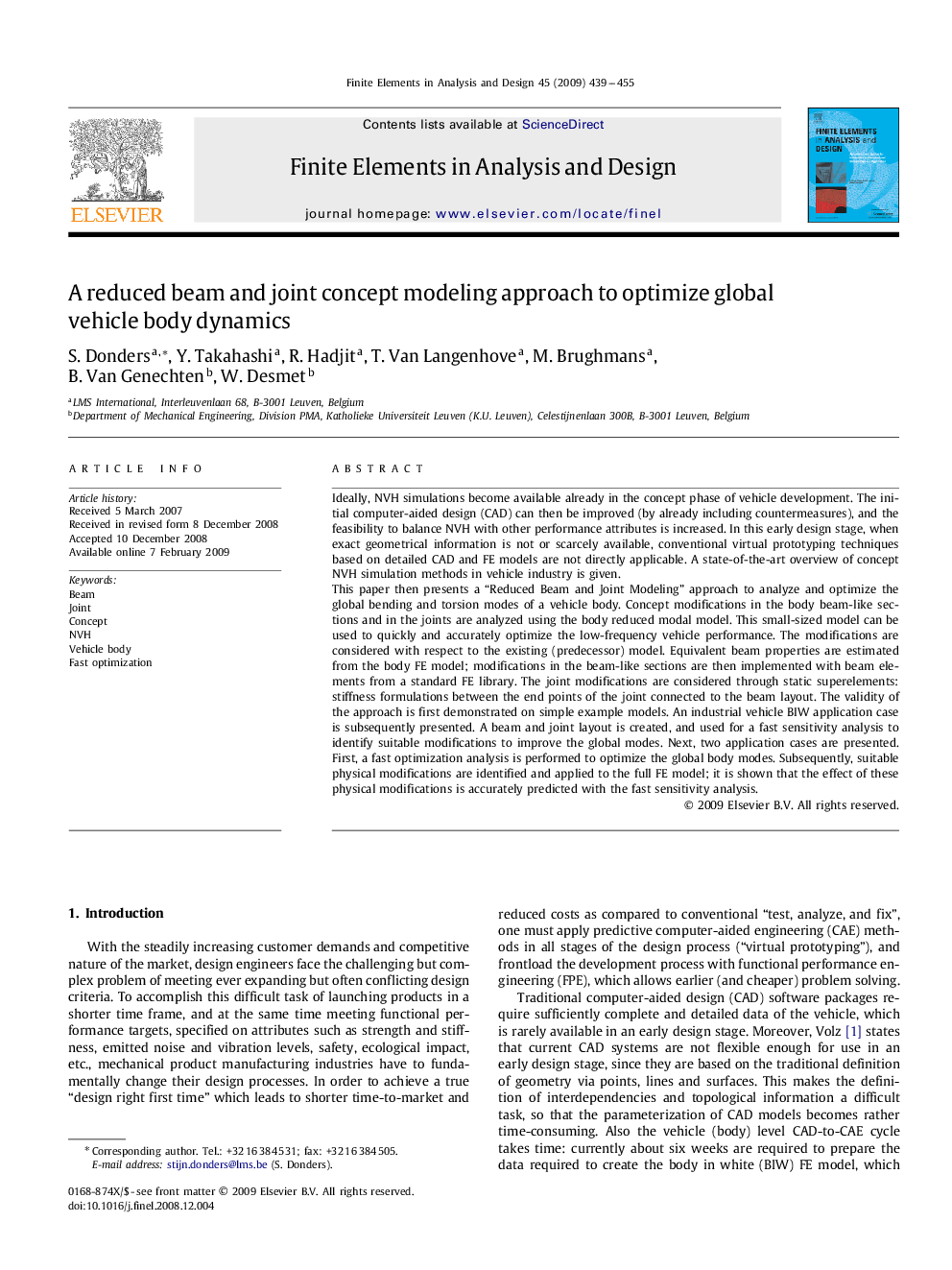| کد مقاله | کد نشریه | سال انتشار | مقاله انگلیسی | نسخه تمام متن |
|---|---|---|---|---|
| 514239 | 866715 | 2009 | 17 صفحه PDF | دانلود رایگان |

Ideally, NVH simulations become available already in the concept phase of vehicle development. The initial computer-aided design (CAD) can then be improved (by already including countermeasures), and the feasibility to balance NVH with other performance attributes is increased. In this early design stage, when exact geometrical information is not or scarcely available, conventional virtual prototyping techniques based on detailed CAD and FE models are not directly applicable. A state-of-the-art overview of concept NVH simulation methods in vehicle industry is given.This paper then presents a “Reduced Beam and Joint Modeling” approach to analyze and optimize the global bending and torsion modes of a vehicle body. Concept modifications in the body beam-like sections and in the joints are analyzed using the body reduced modal model. This small-sized model can be used to quickly and accurately optimize the low-frequency vehicle performance. The modifications are considered with respect to the existing (predecessor) model. Equivalent beam properties are estimated from the body FE model; modifications in the beam-like sections are then implemented with beam elements from a standard FE library. The joint modifications are considered through static superelements: stiffness formulations between the end points of the joint connected to the beam layout. The validity of the approach is first demonstrated on simple example models. An industrial vehicle BIW application case is subsequently presented. A beam and joint layout is created, and used for a fast sensitivity analysis to identify suitable modifications to improve the global modes. Next, two application cases are presented. First, a fast optimization analysis is performed to optimize the global body modes. Subsequently, suitable physical modifications are identified and applied to the full FE model; it is shown that the effect of these physical modifications is accurately predicted with the fast sensitivity analysis.
Journal: Finite Elements in Analysis and Design - Volume 45, Issues 6–7, May 2009, Pages 439–455